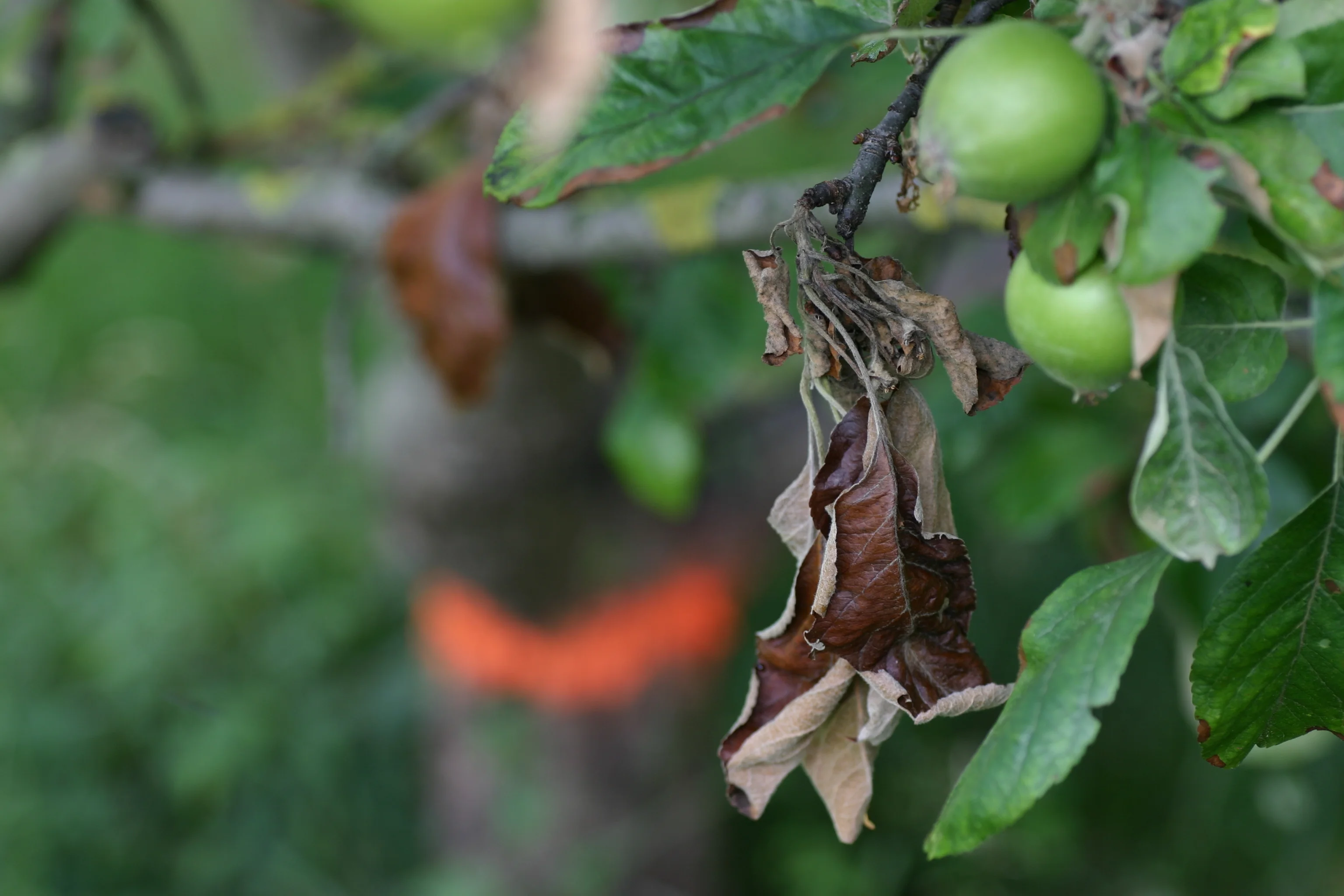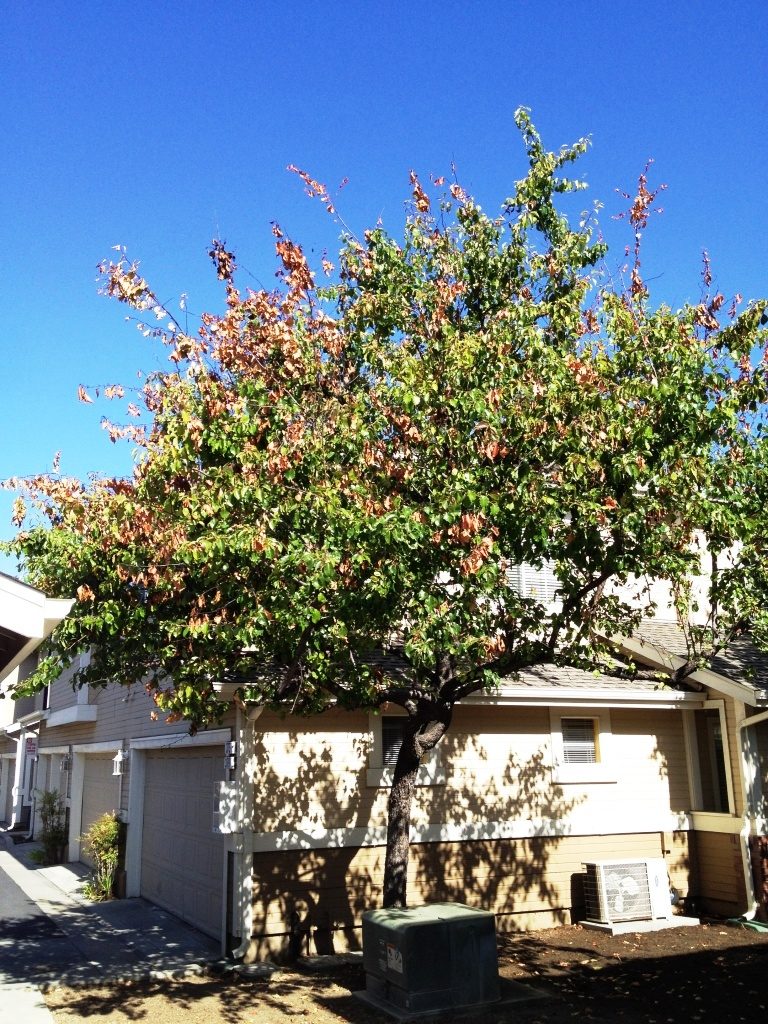
Arbor-wellness: Fire Blight
This time of year, it is often easy to spot an ornamental pear in the landscape because it will often have burned tips with brown leaves at the tip of branches. This is a classic symptom of a bacterial disease called fireblight. This difficult to control disease starts in the spring by small infections at the tip of a branch and moves further down the branch during the spring, killing as it goes. The result is the blackened tips that usually have a bend or crook in them, similar to a “shepherd crook”. Ornamental Pears are the most common tree in the landscape in our region that get fireblight, but apples, firethorn, crabapples and several other species are also susceptible. Click here to find out about fireblight control and how Arborwell can help prevent this on your trees.
My trees seem to be dying at the tips, what is this?
If the tips are crooked, the color is dark brown to black and the tree is in the apple family, it is probably a bacterial disease called fireblight.
How do I suppress it?
Fire blight is a bacterial disease so it behaves somewhat differently that most fungal diseases and control of it can be a little more complicated. Fall or winter preventative treatments are the most cost-effective way to suppress fireblight on susceptible trees. If your trees are already infected, we treat with an antibiotic injection as well as the preventative treatment. These two treatments together seem to be very effective.
What kinds of trees get fireblight?
Trees and shrubs in the apple family are susceptible to fireblight. This includes Apples, pears, crabapple, hawthorn, loquat, mountain ash and toyon and shrubs like firethorn and rose. Because it will spread by wind and rain from one type of plant to another, treating all the susceptible plants on your site is usually a wise idea.
How do I get rid of the dead tips, there seems to be a lot of them?
Proper pruning is really critical when you have fireblight. Pruning needs to remove all of the infected stem, so knowing how far down to make the cut is very important. Disinfecting the tools used to prune with is also important because bacterial spores from an infected tree can transport fireblight to other trees very readily. Timing of when to prune is also important. When a tree is pruned during the time fireblight is active, new infections can more easily occur. At Arborwell, we know how to make a good management plan for your ornamental pears and other susceptible trees that maintains their health and safety for years to come. Contact your Arborwell certified arborist for professional management of fireblight and all your tree needs.
